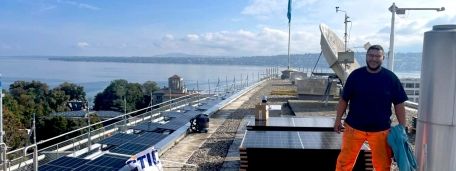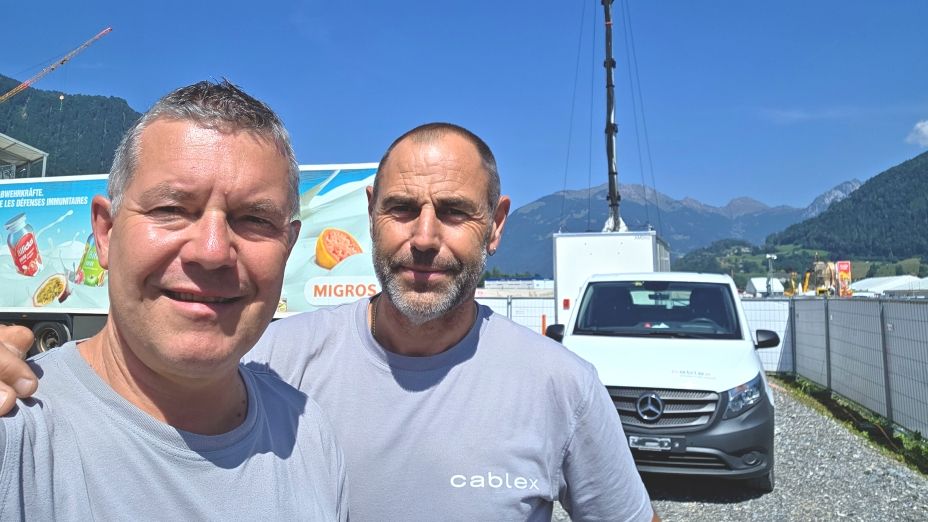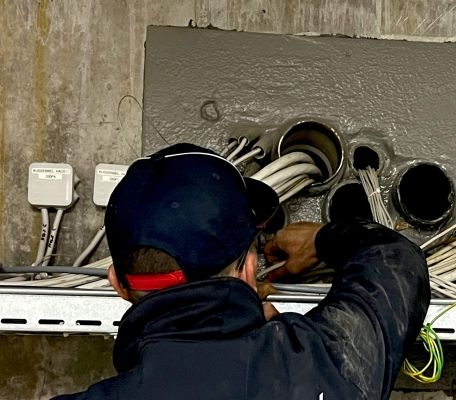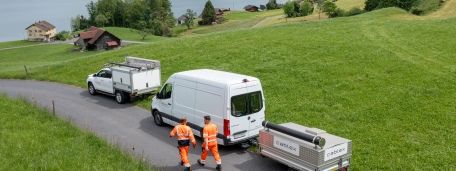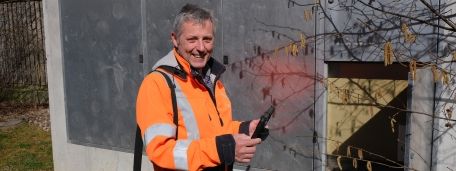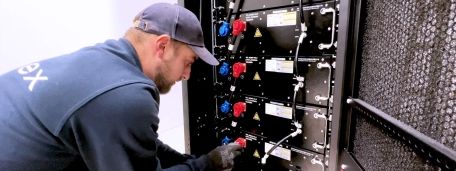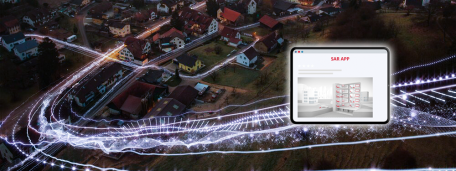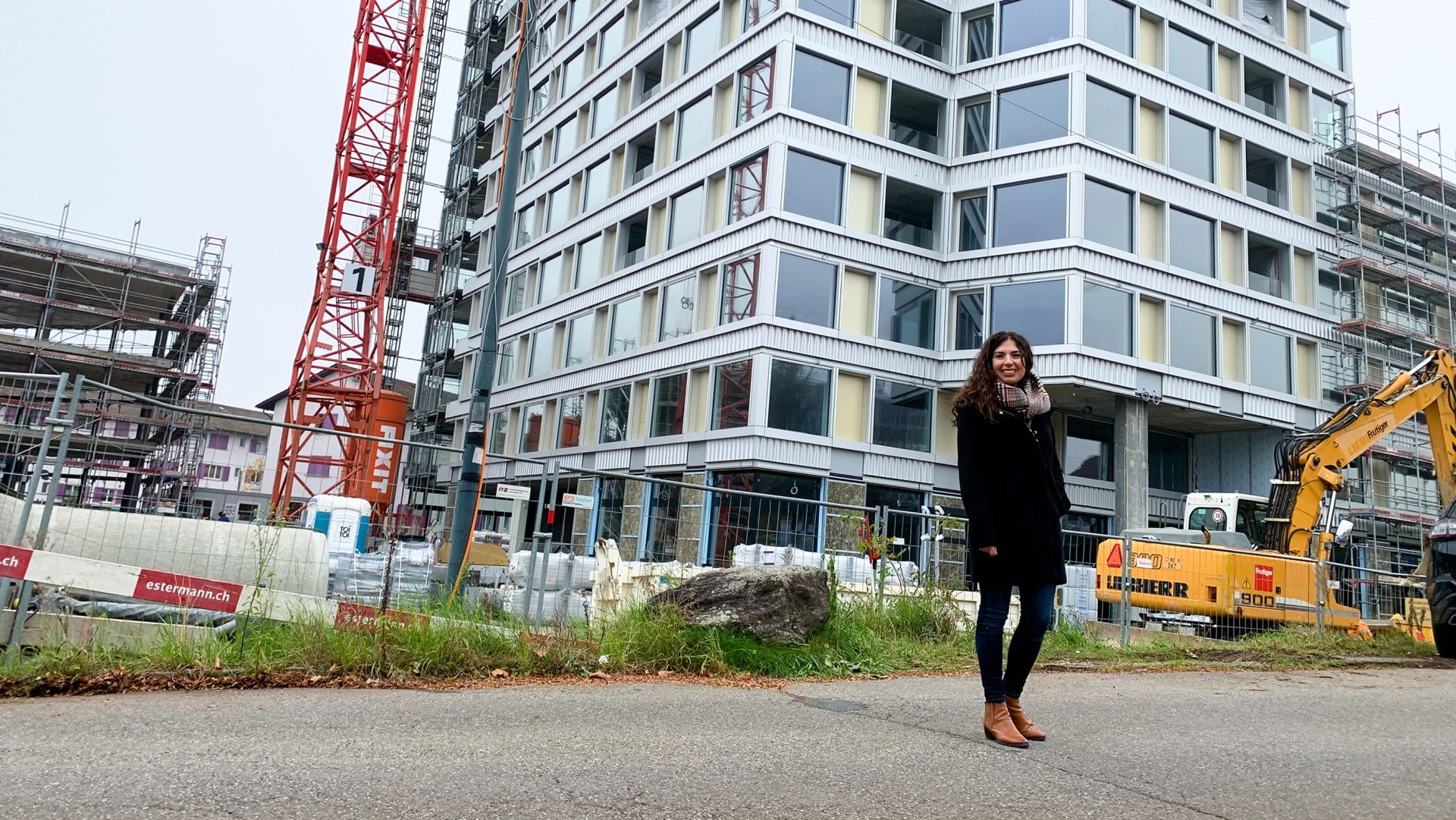
Mobile communications coverage BäreTower.
Why an in-house installation?
Antennas are being installed in public buildings more and more. One of the reasons is the frequencies, which are becoming higher and higher and call for constantly increasing power. The higher the frequency, the shorter the range. Therefore, an outdoor antenna with its high frequency can only supply a relatively small area with afast wireless network, and this frequently no longer reaches into the building.
Another reason for the increasing demand for in-house installations in public buildings and larger office buildings is the modern facade construction. These days, mainly glass facades are installed with triple-glazing, which provides very good insulation and protects against outside noise. However, they also contribute to mobile communication signals not being able to get into the interior.
More and more people use devices that send and receive data. Due to the increase in mobile data traffic, the demand for bandwidth is increasing as well. It doubles approximately every one and a half years, and must be covered. Therefore, the installation of indoor and outdoor antennas is becoming more and more important.
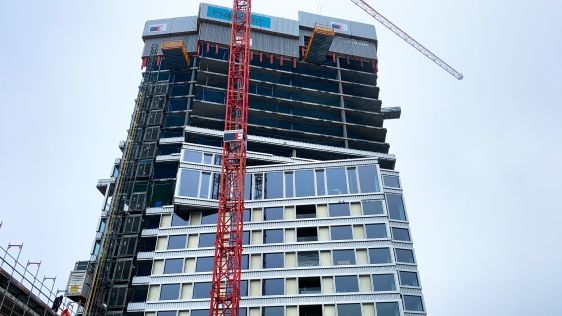
The engineering process.
cablex is accompanying the “BäreTower new construction project” in the canton of Bern from the project preparation, continuing with the execution up to the project follow-up. In the project preparation [phase, the requirements are recorded together with the customer, and the volume is calculated in a pre-simulation. After release of the documentation by the customer, the installation work can be carried out. The mobile communications coverage is checked in the project follow-up by means of on-site measurements, and the final documentation is created.
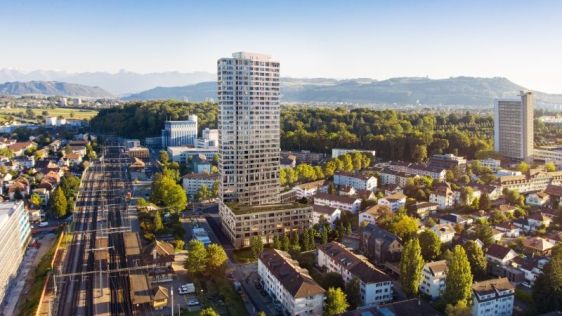
Facts about the construction project.
- High-rise building with 32 storeys and 100 metres tall
- 27,000 m2 floor space above-ground
- 1,200 m2 shop space, 1,300 m2 catering, 5,500 m2 hotel, 2,200 m2 office, 16,000 m2 residential space
- 220 underground parking spaces
Project preparation with iBwave.
In this report, we present the simulation tool that provides valuable services to our project managers in the project preparation. The mobile communications coverage of a building can be planned with the iBwave project management platform. A floor plan of the resulting building complex is sufficient to carry out detailed planning of the required antennas.
First of all, the walls and materials are defined to determine the attenuation value. Afterwards, the radio communications system is defined. These days, UMTS (Universal Mobile Telecommunications System) and LTE (Long Term Evolution) networks are used, i.e. the third and fourth generation. The 5G network will become more and more important in the future. The antennas and wireless network parts are positioned in the tool in accordance with the spatial arrangement of the floor plan. The iBwave tool simulates the mobile communications coverage, and the signal strength is shown in colour.
The colour scale ranges from violet to red, yellow, green to dark blue and black. The colour violet indicates a signal strength of more than -40 dBm (decibel milliwatts). In the red range, the signal strength is -50 dBm, approximately -75 dBm in the green range, and a strength of up to -95 dBm is to be expected in the blue range. The colour black shows a signal strength that is less than -100 dBm.
The colour representation of the signal strengths shows how the mobile communications coverage is distributed, on various floor plans, throughout the entire building after the indoor antennas are positioned. With this simulation, a decision can be made with the builder in detail before construction begins for how many antennas are to be installed later and at which specific locations.
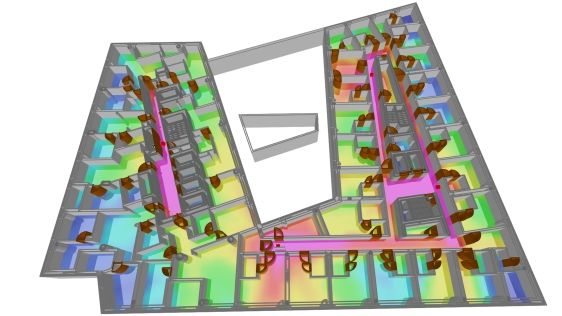
Next year, cablex technicians will install the planned antennas and put them into operation for the 3G and 4G mobile communications system in the highest residential tower in the canton of Bern. That's when Communication will be there live, and we'll report on the installation work.


